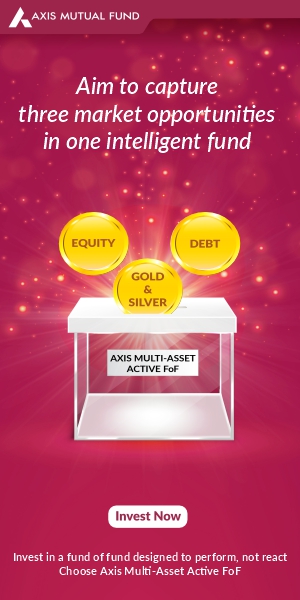All you wanted to know about Target Maturity Funds

Target maturity funds are fast gaining popularity among investors in India. As per our Mutual Fund research, the total assets under management (AUM) of target maturity funds (as on 28th February 2023) were more than Rs 2 lakh crores (source: fund factsheets, as on 28th February 2023). Out of this, AUM of target maturity index funds was nearly Rs 1.4 lakh crores, while AUM of target maturity ETFs was around Rs 66,000 crores.
Several factors have helped target maturity funds gain wide acceptance with investors. One of the reasons of target maturity fund’s popularity is the Fixed Maturity Plan (FMP) like structure, which makes it simpler for investors to make investment decisions e.g. how long to invest. Another important reason is the visibility of returns for the investor over the investment period.
In this article we will discuss about target maturity funds, their benefits and whether they are suitable in the current interest environment.
What are target maturity funds?
Target maturity funds are open ended passive debt mutual fund schemes, which track an underlying bond index and have defined maturity dates. You will get the principal along with accrued interest on maturity of the fund. Target maturity funds can be in the form of Exchange Traded Funds (ETFs) or Index Fund.
Salient features of target maturity funds
- As per SEBI’s mandate target maturity funds will invest in Government Securities (G-Secs), State Development Loans (SDLs) and PSU bonds only. The underlying portfolio of the scheme mirrors a bond index (e.g. Gilt index, Gilt + SDL index with defined maturities).
- Target maturity funds hold the bonds in their portfolio till maturity. The bonds pay coupons (interest) at regular intervals and face value (principal) on maturity. The coupons paid by the bonds are re-invested in the scheme.
- On maturity of the fund (i.e. on the target maturity date), the bonds will pay the face value (principal) and accrued interest (as applicable) to the scheme and on the maturity date of the scheme, the maturity proceeds will be credited to the investors’ bank accounts.
How is target maturity fund different fixed maturity plan?
Both target maturity fund and FMP has fixed maturity dates. However, FMP is a close ended scheme while Target Maturity Fund is open ended. In close ended schemes, you cannot redeem your units before the maturity date. On the other hand, you can redeem units of your target maturity fund at any time based on prevailing Net Asset Values (NAVs). Hence, target maturity funds are much more liquid than FMPs.
Why invest in Target Maturity Funds?
- Target Maturity Funds provide high visibility of returns. You can predict with a reasonable degree of confidence, how much returns you will get i.e. yield to maturity (YTM) of the scheme, by what date i.e. the maturity date of the scheme.
- Yields of G-Secs across different maturities in the yield curve are higher than interest rates of traditional fixed income products e.g. Bank Fixed Deposits (FDs), Post Office (PO) small savings schemes. Target maturity funds also invest in SDLs and PSU bonds, which give higher returns than G-Secs. As a result you can potentially get higher yields compared to traditional fixed income products provided your investment tenure matches with target maturity date.
- Since target maturity funds hold bonds till maturity, the duration of the scheme will reduce over a passage of time. For example, if you buy a 5 year bond this year, next year the same bond will become a 4 year bond. Duration of a bond is directly related to interest rate risk. Since duration reduces as the maturity approaches, the interest rate risk will also reduce over the investment tenure.
- The credit quality of Target Maturity Funds is very high. G-Secs have no credit risk since they have sovereign guarantee. SDLs are State Government bonds; interest and principal payments of SDLs are guaranteed by the Reserve Bank of India (RBI). So SDLs have virtually no credit risk. PSU bonds enjoy quasi sovereign status since they are owed by Government.
- Over 3 years plus investment tenures, you can enjoy benefits of long term capital gains taxation in debt funds. Long term capital gains in debt funds are taxed at 20% after allowing for indexation benefits.
Is this a good time to invest in target maturity funds?
- For the last 1 year, central banks all over the world, have been hiking interest rates to control high inflation. The RBI hiked repo rate by 2.5% in the last 1 year from 4% to 6.5% (as on 28th February 2023).
- The 10 year Government bond yield rose by 60 bps in the last one year from 6.8% to 7.4% (source: tradingeconomics.com, as on 28th February 2023).
- Yields have risen across all maturities in the yield curve. The yield of the 3 year Government bond rose by 140 bps in the last one year from 5.4% to 6.8% (source: tradingeconomics.com, as on 28th February 2023).
- There are attractive investment opportunities across different maturities in the yield curve. Investors can select target maturity funds based on their investment tenures.
- Bond market price anticipated rate hikes in the bond yields. In the last 6 months, the 10 year bond yield remained within a tight range of 7.3 – 7.4%, despite RBI hiking interest rate by 60 bps during this period, including the recent 25 bps rate hike by the RBI in February 2023 (source: worldgovernmentbonds.com, as on 28th February 2023).
- The yield curve has also flattened considerably over the past 6 months; the difference between the 3 year and 10 year bond yield is only 60 bps as on 28th February 2023 (see above). Flattening yield curve indicates possible reversal of interest rate trajectory.
- Investors can lock-in the current yields across different maturities by investing in the appropriate target maturity fund based on their investment tenures.
- Since the target maturity fund will hold the bonds till maturity, you will continue get these yield even if interest rates come down in the future.
Who should invest in target maturity funds?
- Your investment tenure should ideally match with the target maturity date of the scheme. There will be no interest rate risk, if your investment tenure matches with the target maturity date.
- There are different target maturity funds with different maturity dates – select a scheme according to your investment tenure.
- NAVs of target maturity funds can be volatile depending on yield movements. You should be prepared for interim volatility.
- You can invest either in target maturity ETFs or index funds. You need to have Demat and trading accounts to invest in target maturity ETFs. If you do not have Demat account, you can invest in target maturity index funds.
Investors should consult with their financial advisors or mutual fund distributors if target maturity funds are suitable for their investment needs.
Mutual Fund Investments are subject to market risk, read all scheme related documents carefully.
Axis Mutual Fund launched its first scheme in October 2009 Since then Axis Mutual fund has grown strongly. We attribute our success thus far to our 3 founding principles - Long term wealth creation, Outside in (Customer) view and Long term relationship. Come join our growing family of investors and give shape to your desires.
Quick Links
Other Links
Follow Axis MF
POST A QUERY






